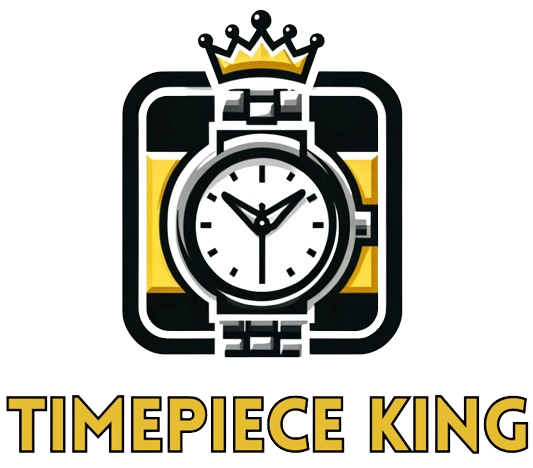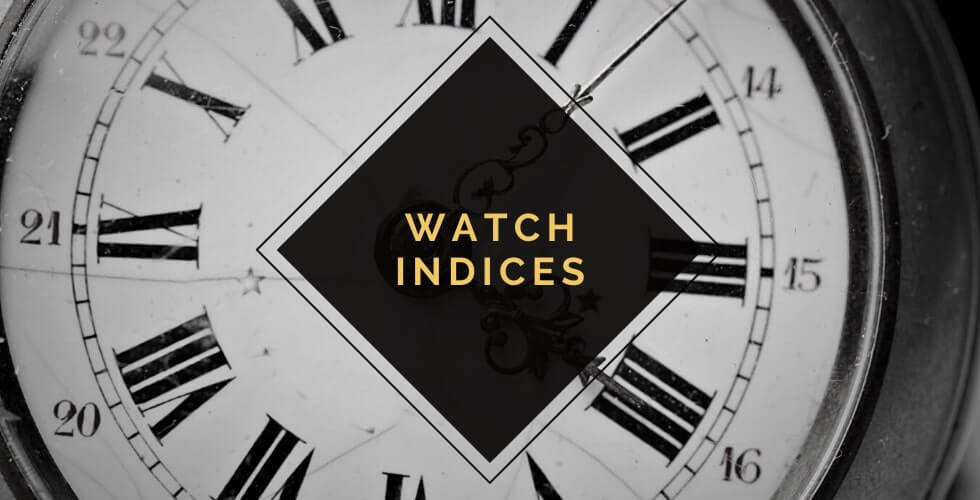It’s true that Arabic numerals are by far the most common type of watch indices. However, they’re far from the only ones.
When choosing their next timepiece, many people focus on other crucial elements such as…
…while overlooking the importance the indices play in the appearance of a watch. The irony is, watch indices are probably the most visible from all the mentioned parts and yet they’re mostly overlooked.
Depending on the style of the watch you prefer, different types of indices are recommended.
Spoiler alert: there are as many as 10 of them!
In today’s article, we will go through all of them, pointing to examples from some of the most renowned watchmakers.
Disclaimer: As an affiliate, Timepieceking might earn a commission (at no additional cost to you) for purchases made via links in the article.
Watch Indices: Definition
So, what does the word “indices” mean?
If it wasn’t for the indices, you’d have difficulty figuring out what time it is.
The indices are symbols that run around the circumference of your watch’s dial. They inform you what time it is when paired with the hands.
Indices come in a variety of shapes and sizes. The frequently used Arab and Roman numerals are just two of the types.
Watches are also available with a mix of these indexes. For example, Rolex indices are frequently a combination of arrow and baton markers.
So… Hour Markers or Indices?
Both words are interchangeable and absolutely fine to use. The symbols surrounding your dial that represent the hours on your watch are referred to as hour markers or indices.
10 Types of Watch Indices Explained
As already mentioned, there are way more types of watch indices than the most popular Arab numerals.
In fact, there are as many as 10 of them. In this section, we will go through each of the 10 types, starting from the most popular and slowly moving to rarer kinds.
1. Arab Numerals

The fact that Arabic numerals are by far the most common type of watch indices doesn’t mean that’s always been the case. It wasn’t until the beginning of the 20th century that the Arab numbers slowly started overtaking their Roman counterparts.
An Arabic index watch can come in different styles, sizes, and settings. Each hour marker can be numbered from one to twelve. But that doesn’t mean all numbers have to be included on the face.
For example, certain watch models might include the numerals only at the three, six, nine, and noon o’clock positions. A more minimalistic approach is to mark only the six and twelve o’clock positions. There are also timepieces that mark noon o’clock alone.
However, a lion’s share of watch models across different brands includes all 12 numerals.
A popular practice amongst some popular watchmakers (ie. Seiko, Citizen or Bulova), is to replace certain numerals (most frequently the number “3”) with elements such as date window. Other brands (ie. Victorinox) tend to put their logo at the expense of the 12 o’clock numeral.
Most of today’s modern watches use what we call the “Western Arabic Numerals”.
However, the “Eastern Arabic Numerals”, also known as Hindi, is making some sort of a comeback in recent years. An example of a modern watch applying Eastern Arabic numerals is the Day-Date Rolex from 2016.
You can learn more about the subject by reading the article on our friendly website, RevolutionWatch.
2. Roman Numerals
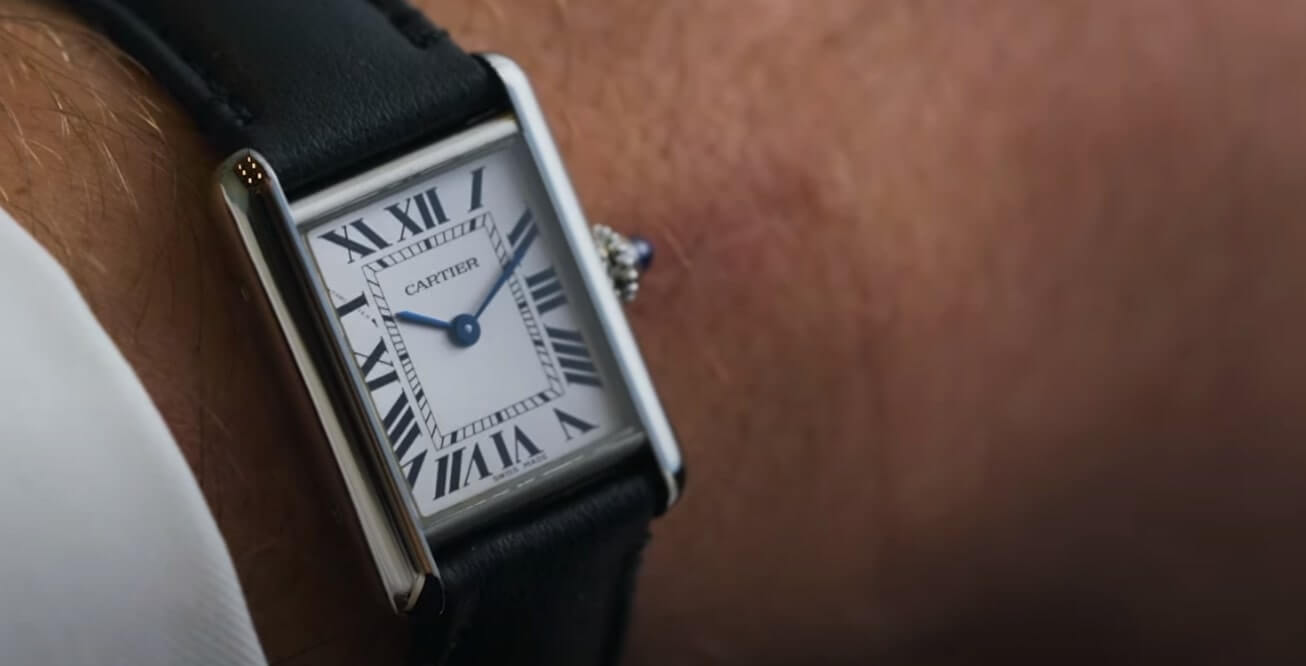
Roman numerals are the earliest types of indices found on the face of a watch.
They were the only type present in timepieces starting from the world’s first watch models to the latter stages of the 19th century. In recent decades, they’ve been enjoying a bit of a renaissance amongst aficionados who value the vintage look. Many think that the inclusion of Roman numerals gives watches a much more elegant look.
The shape of the number 4, generally printed as IV but most often encountered on watch and clock dials as IIII is a well-known anomaly surrounding its use on dials.
There are many interesting theories on why this is the case. However, the most plausible one is that regarding the visual balance, with the “4” being compared and directly in line with the “8” across the dial.
3. Breguet Numerals
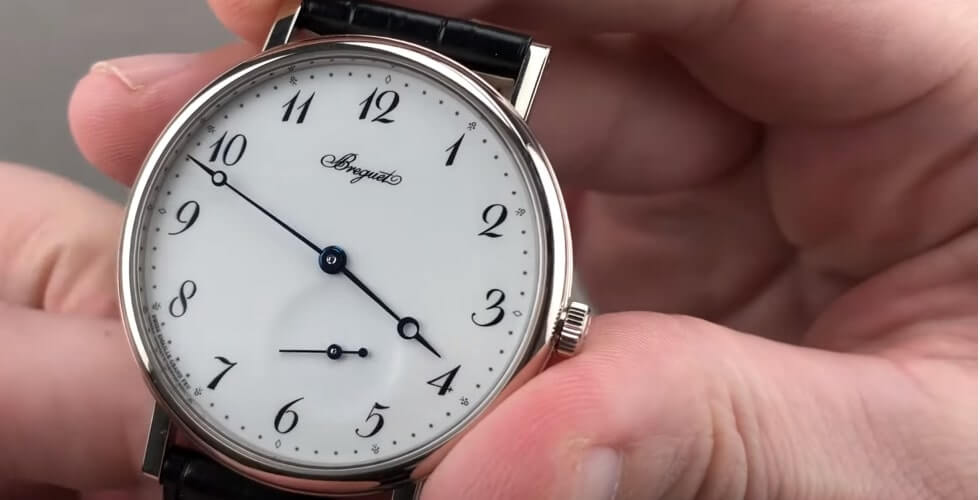
Introduced to the watchmaking industry in 1790 by Abraham Louis Breguet, Breguet numerals are a modified type of Arabic indices. To this day, they’re quite popular and can be seen in watch models from popular brands ranging from affordable Seiko watches to luxury Rolex models to, naturally, Breguet watches.
To this day, nobody really knows what inspired their introduction other than Breguet’s own naturally cursive handwriting, as evidenced by his signature. They combine artistic flair with legibility in a way that has appealed to dial designers for more than 2 centuries already.
4. Baton Indexes

Similar to baton watch hands, the indices are also thick and rectangular in shape.
Compared to stick indexes which we will discuss in a minute, baton indexes are sturdy and solid. Thanks to the robust appearance, they’re definitely more easy to read in the dial. Furthermore, the rectangular shape makes it easy for brands to supply the indices with luminosity, ensuring even better comfort while reading the time in the dark.
Baton indices are extremely popular in sport watches, especially models suitable for diving. Another popular sector utilizing the baton type is military watches.
5. Stick Indexes
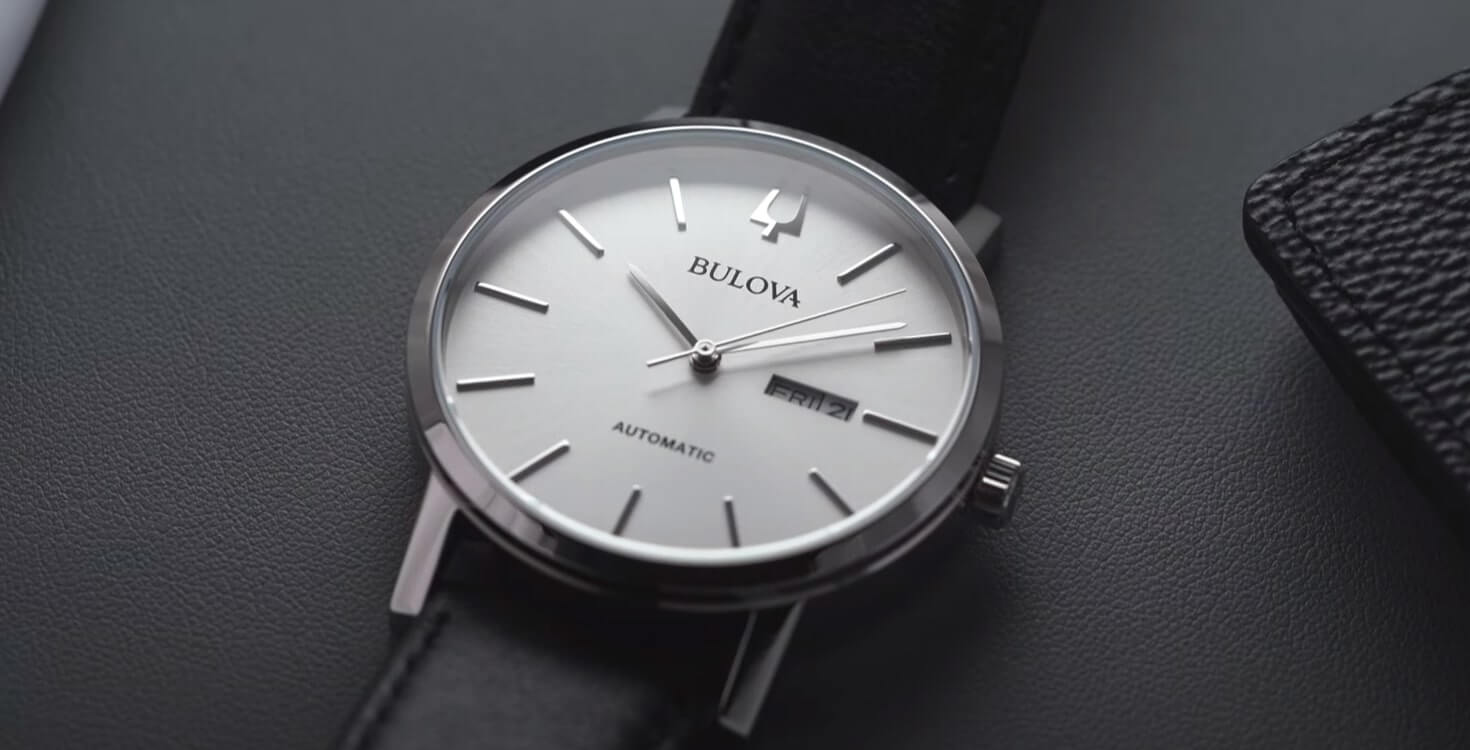
We could say that stick indexes are a leaner, more classy sibling of the baton type. They’re referred to as “stick” for a reason: they’re considerably longer and thinner.
Whereas a baton indices watch is likely to illuminate the indexes, watchmakers offering timepieces with stick markers are bound to illuminate the dial instead (if at all).
Stick indices are very frequently used with timepieces oscillating on the dressy spectrum.
Both stick and baton indexes watches are likely to additionally include the so-called hash marks. These are the tiny markers that mark out the minutes on the watch’s face.
6. Round Indexes
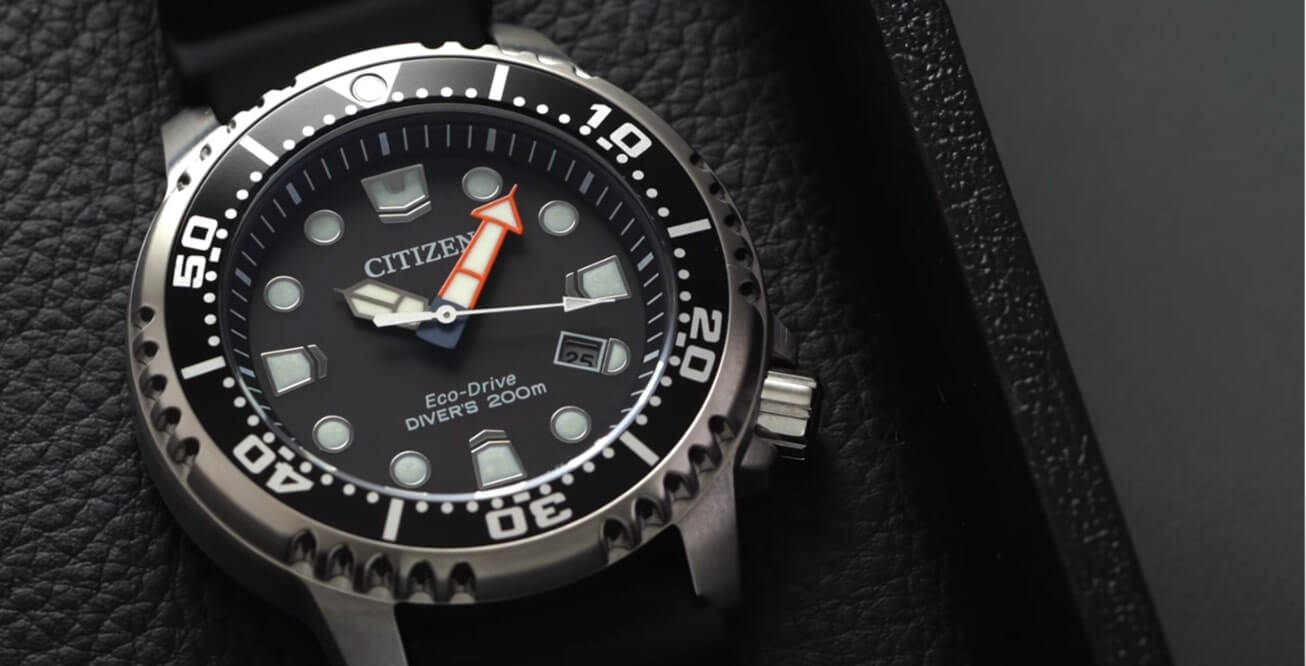
Next to baton indices, round markers are another type designed to offer excellent legibility.
Because of their stocky shape, they’re very frequently filled with a luminous substance for hassle-free reading in any light. It’s not unusual for the round markers to be mixed with baton indices. Arrows and triangular markers are other types often used with round indexes.
7. Square Markers

We’ve already settled that Arab numerals are by far the most common type of watch indices.
Square markers are the complete opposite.
The number of watchmakers utilizing these indexes is incredibly small. If we were to pick the most well-known example of a watch sporting square markers, it would probably be Tudor Pelagos. With that said, even this iconic model combines the markers with baton indexes placed at six and nine o’clock, an arrow marker at noon o’clock, and a date window at 3 o’clock.
Because of their rarity, square indices definitely grab the eye.
8. Arrow Markers
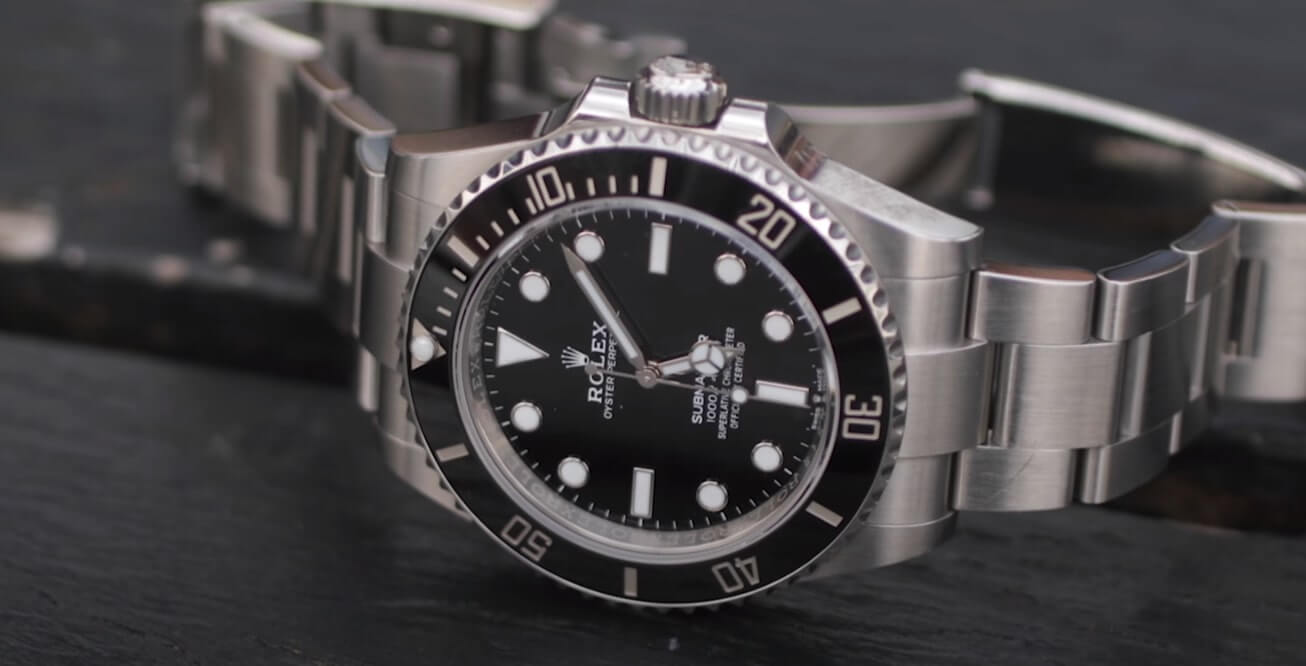
In terms of the look, these are effectively upside-down triangles, with the pointy edge points to the center of the dial.
This type of watch indices is unique in the way that it appears nearly exclusively at the noon o’clock position.
While some unique-looking watches might utilize up to four markers of this kind, > 99% of watch models include only one.
Arrow markers are usually an addition to dials with baton indexes or round markers but sometimes appear also with timepieces sporting Arab or Roman numerals.
Swiss watchmakers, particularly the ones at the top end of the pricing table, tend to use these types of markers often.
Perhaps the biggest advantage of arrow indices is the improved legibility by helping differentiate the 12 o’clock position from the other markers.
9. Diamond Markers

While all watch indices types discussed until now serve some practical purpose, diamond markers are solely decorative.
The name can be a bit misleading at times as the markers might be made of different stones, such as rubies or sapphires. These type of markers is popular but not limited to luxury watchmakers. JBW watches are a good example of a watchmaker offering diamond-adorned timepieces without breaking the bank.
It’s not unusual for diamond markers to be used in conjunction with other diamond accents on a model, such as a diamond bezel. Diamond markers are most commonly utilized in women’s models to give them a feminine, jeweled feel.
10. Dagger Indices
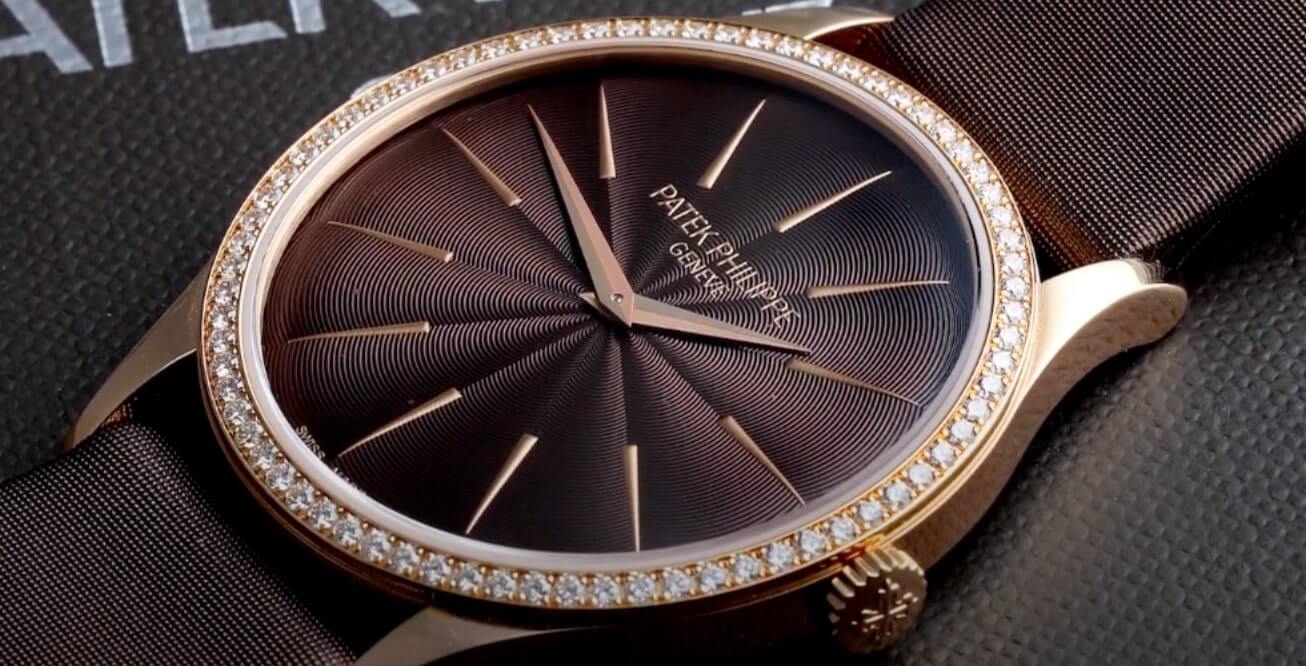
Dagger indexes, also referred to as Dauphine markers, are a less well-known type of hour marker.
This kind of watch indices may be seen on quite a few classic Rolex models. They are shaped like an arrow, as the name indicates. The dagger indexes, like the arrow marker, are usually faceted and point toward the center of the dial.
Because of the sophisticated and elegant feel, they’re mostly used with dressy watches.
Watch Indices Meaning: Summary
We hope that today’s article has helped you understand the meaning and importance of indices on a watch.
While most people at the beginning of their journey as watch aficionados tend to differentiate only between Arab or Roman numerals, you are now aware and can easily distinguish between all 10 of them!
From all the types of watch indices described in the article, which appeals to you the most and why? Let us know in the comment section below. Let’s interact!
